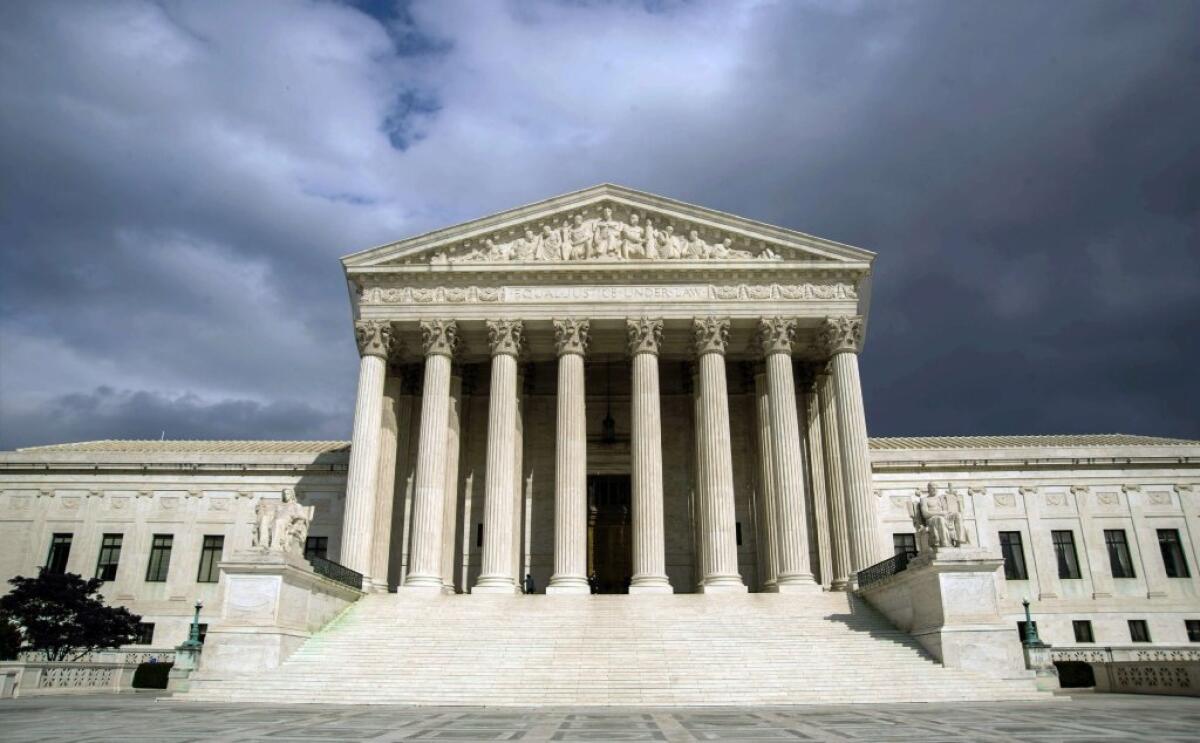Let history rule on recess appointments

- Share via
On Monday, the Supreme Court will hear arguments in an important case that is rooted in arcane legal history but also ripped from recent headlines. The justices are being asked to decide whether President Obama abused his power under the Constitution to make appointments to important federal offices without Senate confirmation “during the recess” of that body.
In answering that question, the justices should keep their eye on the overall design of the Constitution, the way understanding of its provisions has evolved over time and present-day political realities. If they do that, they will reverse or significantly narrow a federal appeals court decision that eviscerated the president’s power to make recess appointments.
In January 2012, Obama made three recess appointments to the National Labor Relations Board to ensure that the agency had the quorum necessary to conduct business. At the time, the Senate was observing a 20-day break in which it would convene a “pro forma” session every three days. At these sessions no business was conducted and no senator was required to show up, except for the one who began and ended the perfunctory proceedings by pounding the gavel. (Ironically, pro forma sessions originated in 2007 as a way for Senate Democrats to prevent President George W. Bush from making recess appointments.)
Obama’s action was a provocative one, and its legality was challenged by Noel Canning, a Yakima, Wash., soft drink bottler that had received an adverse decision from the NLRB that was reconstituted as a result of Obama’s appointments. But in ruling for the company, the U.S. Court of Appeals for the District of Columbia Circuit issued a breathtakingly broad decision.
Instead of simply holding that recess appointments during pro forma sessions were invalid, the court held that presidents may not make recess appointments except between enumerated sessions of Congress, a hiatus that occurs only once a year (and sometimes not at all). Moreover, the court said, presidents could make recess appointments only to vacancies that actually arose during that particular recess. If an official resigned a few days earlier, the president couldn’t appoint a temporary successor.
The appeals court’s reasoning would outlaw long-standing practices. The Obama administration’s brief to the Supreme Court notes that “since the 1860s, at least 14 presidents have, collectively, made at least 600 civilian appointments (and thousands of military ones) during intra-session recesses.” As for appointments to vacancies that opened up before a recess, it argues that “there were indications from each of the first four presidents — including actual appointments by Washington, Jefferson and Madison — that recess appointments can indeed be used to fill vacancies that preexisted the recess.”
As we observed at the time of the appeals court decision, dramatically reining in recess appointments might not be a problem if the confirmation process always worked the way the framers of the Constitution intended, with the president submitting nominations to the Senate in timely fashion and the Senate expeditiously moving to an up-or-down vote. In an ideal world, recess appointments would be exceedingly rare.
But we aren’t there yet, even after the decision by Senate Democrats last year to abolish the filibuster for most presidential appointments. A determined minority in the Senate can still use other procedural devices to hold up action on nominees.
The Supreme Court has several options in the Noel Canning case. It could accept the administration’s (to us, persuasive) argument that a series of pro forma sessions ought to be considered a recess because during that time the Senate can’t “participate as a body in the appointment process.” But even if it disagrees with that position, the court should reject the appeals court’s extreme view that recess appointments can be made only between formal sessions of Congress and only for the tiny number of vacancies that arise during a recess.
Where language in the Constitution about the operation of government is ambiguous, the court should defer to long-standing practices accepted by the executive and the legislative branches. The recess appointment is one of those practices.
More to Read
A cure for the common opinion
Get thought-provoking perspectives with our weekly newsletter.
You may occasionally receive promotional content from the Los Angeles Times.









